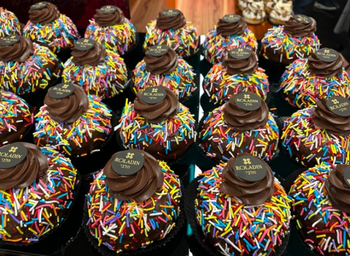Sufganiya, Sufganiyot

Above: From The Book of New Israeli Food. Photography: Eilon Paz
They start popping up shortly after Sukkot— trays of ball-shaped jelly donuts generously dusted with confectioner’s sugar. These are, of course, sufganiyot (plural of sufganiya), the icon of local Hanukkah celebrations. As we head towards December, there is no getting away from them. Cafes, bakeries, kiosks, even supermarkets tempt our will power with these sinfully rich treats. And not just the classic variety, filled with the ubiquitous strawberry jam, but all manner of fancy sufganiyot creatively topped and/or filled with salty caramel, chocolate ganache, shredded halva, bamba (popular peanut-based snack), chocolate truffles, rose flavored malabi cream, pistachio cream— the list goes on and on. There are also unfilled sufganiyot, bite sized sufganiyot, and increasingly popular baked sufganiyot. The latter rather defeats the connection of this treat to Hanukkah (that calls for eating fried foods to commemorate the oil miracle), but saves calories. By the time the 8-day holiday is over, everybody is (literally) fed up with sufganiyot. They disappear from the market until the next year, and leave us with a heartburn and a couple of extra pounds.
Sufganiyot vs Latkes
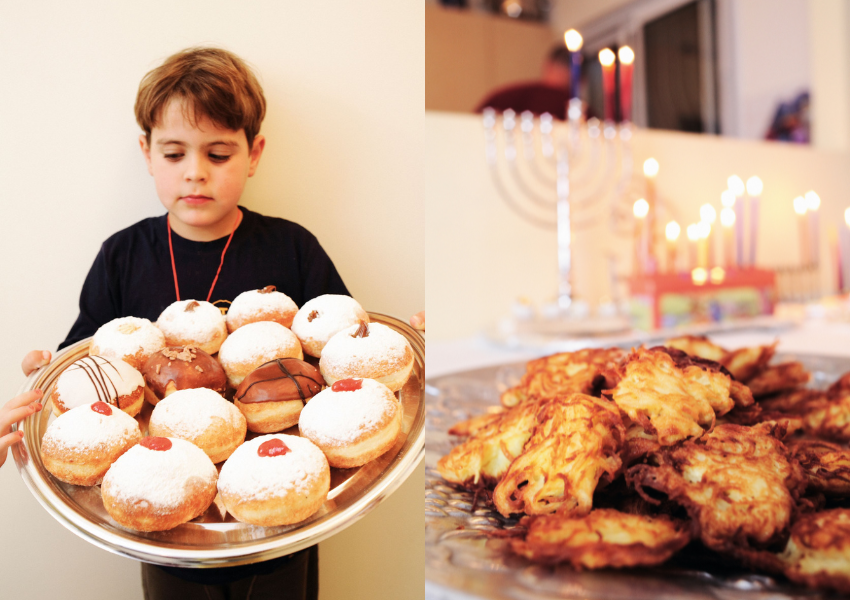
Above: From The Book of New Israeli Food. Photography: Eilon Paz
The custom of eating fried foods on Hanukkah gave birth to a variety of delectable, mostly sweet treats – from the North African sugar coated sfinge to the honey coated Sephardic bimuelos. In the Askenazi food culture, quite a few dishes are associated with this winter holiday. Some of them are savory, like knishes and kugel, but the iconic Hanukkah treats are potato latkes and donuts (aka ponchkes in Yiddish). As opposed to the U.S., where latkes reign supreme, Israeli Hanukkah is all about sufganiyot. The Hebrew name sufganiya was given by a renowned Jewish Zionist educator David Yelin, and it is based on the Talmudic sofganin (sfog means sponge in Hebrew).
Military past, Zionist present
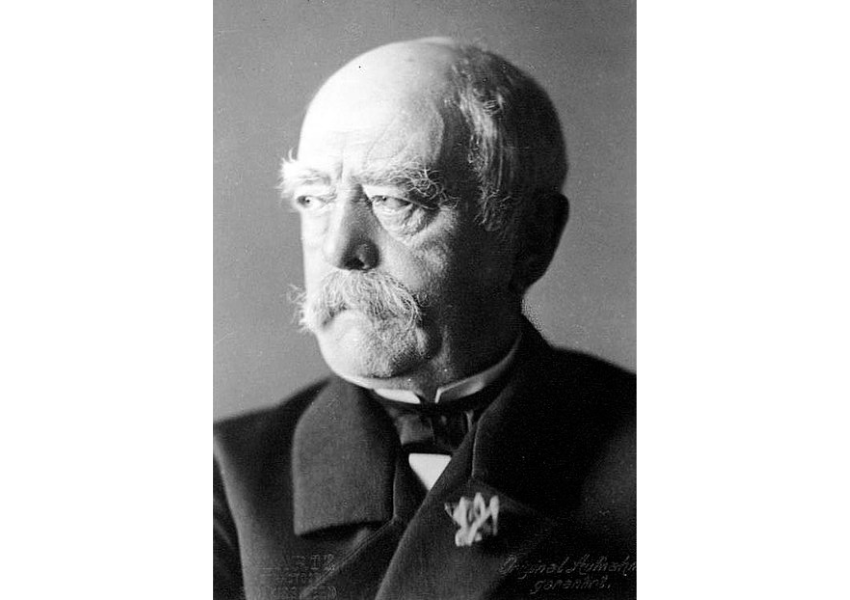
Above: “Otto von Bismarck-Schönhausen (Reichskanzler of Germany, 1871 – 1890), after his resignation in 1890.” Wikipedia. Photo provided by the German Federal Archive. (Public Domain.)
Sufganiya as we know it today is very similar to the famous German pastry called Berliner or Bismark (the first chancellor of the German Empire). The legend has it that it was created by a zealously patriotic field baker for Prussian regiment, and its size roughly that of a cannon ball. Ostensibly, Jewish bakers of German provenance, who arrived in Palestine in the 1930s and became the founding fathers of the local pastry culture, brought this delicacy to their new homeland. According to Gil Marks, the historian of Jewish food and culture, Histadrut, the powerful Zionist labor federation, contributed to the sufganiyot proliferation, championing them over latkes. The latter were homemade, while time consuming sufganiyot where usually outsourced, providing work for the Histadrut members. Histradrut also encouraged stretching the “sufganiyot season” to several weeks before the actual holiday to increase revenues.
The Many Faces of a Sufganiya
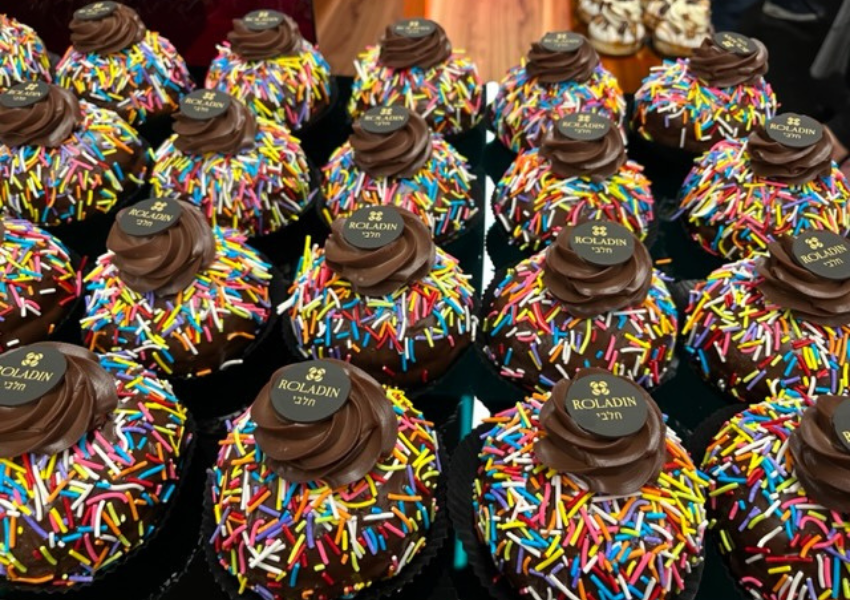
For bakeries and pastry shops, Hanukkah is a super busy season. Some old-school places stick to traditional jelly-filled donuts, but most offer a variety of fillings and toppings to spike customers’ interest and outshine the competitors. The major player on Sufganiyot scene is Roladin, a hundred branches strong bakery chain. Every year Roladin launches an impressive collection of sufganiyot, backed by an aggressive media campaign.
This year, folks at Roladin decided to up their game with a pop up art show, featuring works by leading local artists that used the icon of the Israeli Hanukkah as a source of inspiration. The exhibition, held for 3 days in Anu, the Museum of Jewish People in Tel Aviv, was a collaboration between Foodish (the culinary department of Anu), and Roladin. Curator: Keren Bar Gil.
From the exhibition: Itamar Shimshoni
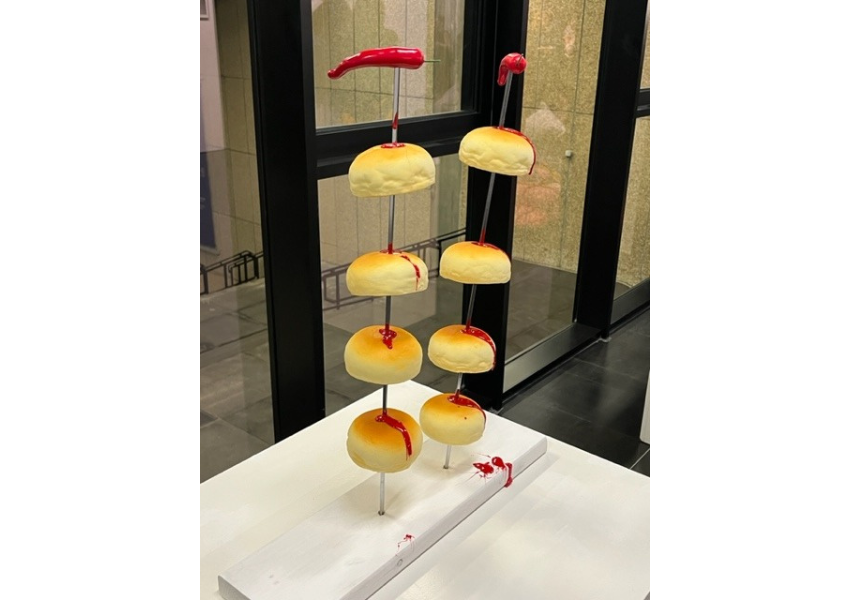
Itamar Shimshoni fused two local food icons— shipudim (skewered meats), the symbol of the Independence Day barbeque, and sufganiyot.
From the exhibition: Keren Filcher
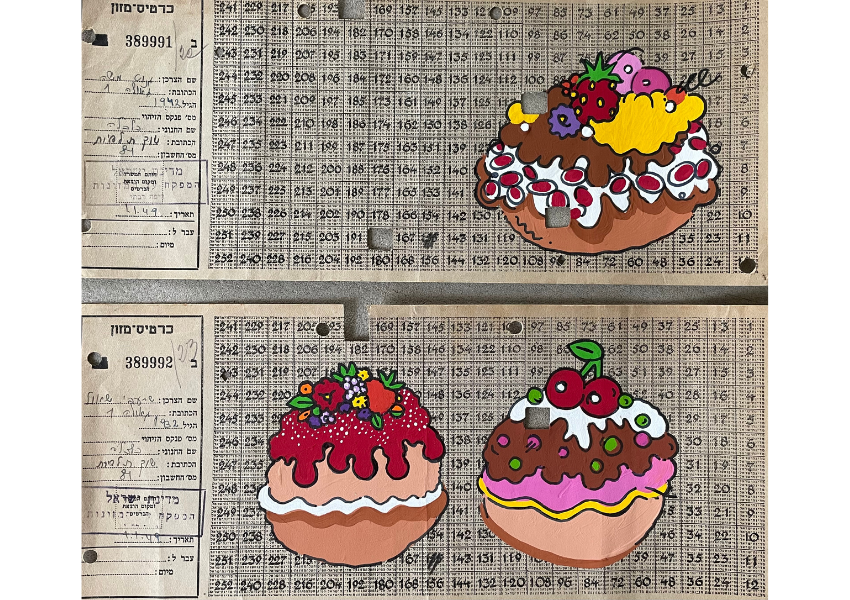
Keren Filcher created a series of sufganyot paintings against the backdrop of food rationing stamps from the 1950s.
From the exhibition: Nelly Horowitz
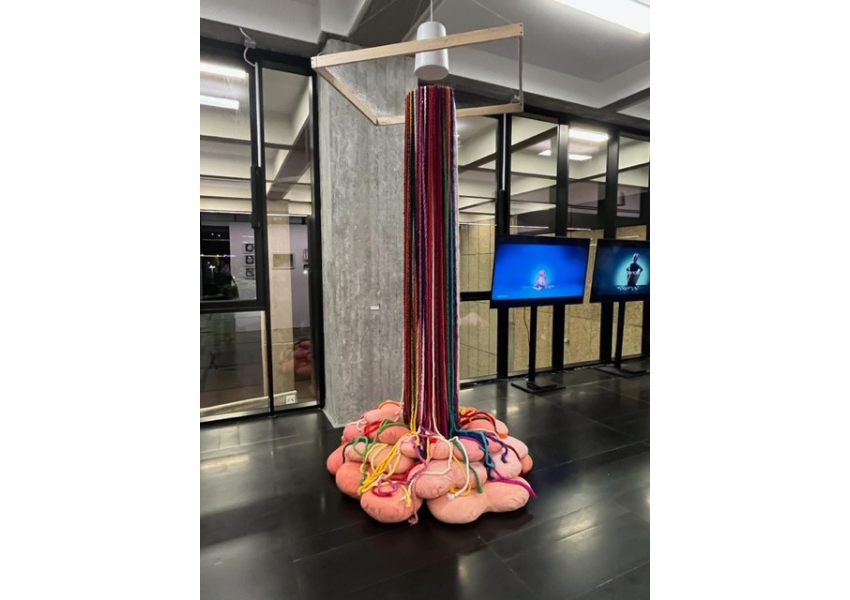
Installation by Nelly Horowitz. A fountain of fillings sprouting out of enormous pillow-like sufganiyot.
Janna Gur is a Tel Aviv-based cookbook author, journalist, speaker, and culinary expert.
Reflections
Now, let's eat!
What are the designated "Hanukkah dishes" in your family? Are sufganiyot a part of your Hanukkah celebrations?
In the kitchen
Have you ever made sufganiyot, and if yes, which recipe did you use?
Want more?
Get curated JewishArts.org content in your inbox

